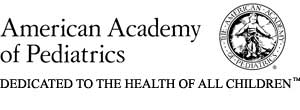There
are many misconceptions and folk tales about how to treat nosebleeds. Here's a
list of do's and don'ts:
Do:
- Remain calm. A nosebleed can be frightening but is rarely serious.
- Keep your child in a sitting or standing position. Tilt his head
slightly forward. Have him gently blow his nose if he is old enough.
- Pinch the lower half of your child's nose (the soft part) between your
thumb and finger and hold it firmly for a full ten minutes. If your child is
old enough, he can do this himself. Don't release the nose during this time
to see if it is still bleeding.
Release the pressure after ten minutes and wait, keeping your child quiet.
If the bleeding hasn't stopped, repeat step 3. If after ten more minutes of
pressure the bleeding hasn't stopped, call your pediatrician or go to the
nearest emergency room.
Don't:
- Don't panic. You'll just scare your child.
- Don't have him lie down or tilt back his head.
- Don't stuff tissues, gauze or any other material into your child's nose
to stop the bleeding.
When to Call the Pediatrician for Nosebleeds
Call your pediatrician if:
- You think your child may have lost too much blood. (But keep in mind
that the blood coming from the nose always looks like a lot.)
- The bleeding is coming only from your child's mouth, or he's coughing or
vomiting blood or brown material that looks like coffee grounds.
- Your child is unusually pale, sweaty or is not responsive. Call your
pediatrician immediately in this case, and arrange to take your child to the
emergency room.
- He has a lot of nosebleeds, along with a chronically stuffy nose. This
may mean he has a small, easily broken blood vessel in the nose or on the
surface of the lining of the nose or a growth in the nasal passages.
Preventing Nosebleeds
If your child gets a lot of nosebleeds, ask your pediatrician about using
saline nose drops every day. This may be particularly helpful if you live in a
very dry climate or when the furnace is on. In addition, a humidifier or
vaporizer will help maintain your home's humidity at a level high enough to
prevent nasal drying. Also, tell your child not to pick his nose. If he picks
it at night or in his sleep, put him to bed wearing thin cotton gloves or
socks over his hands and pinned to his pajama sleeve.

